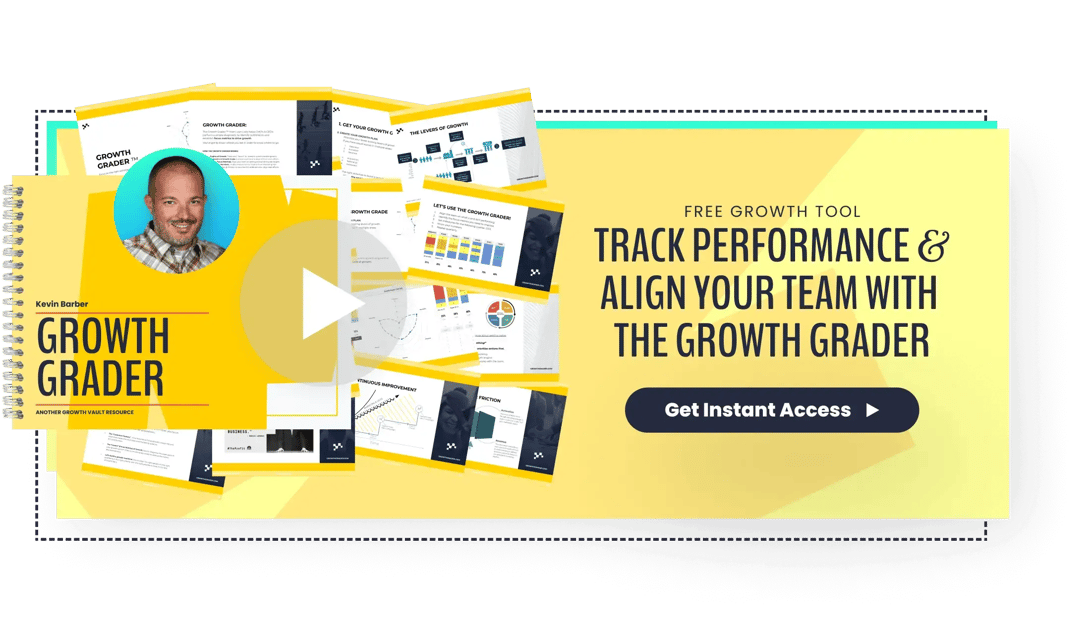From Steve Jobs to The Little Engine That Could, we’re undeniably inspired by success stories. If you’re looking for inspiration concerning your SaaS marketing strategies, you have come to the right blog.
You’ve heard of dozens of strategies you could use for your SaaS marketing efforts… but which strategies actually work and which ones are just glorified buzzwords? How can you determine which SaaS marketing strategies are worth implementing for your business?
In this post, I’ll go over five killer SaaS marketing strategies. For each strategy, I’ll explain how it works and how to implement it in your organization, and then share an example of a genuine brand that used this strategy to achieve incredible results.
How to Pick Winning SaaS Marketing Strategies
Traditional methods of marketing and advertising are less effective for SaaS products. Without a tangible product that your customers can feel, touch, and experiment with, how do you show them what it does and why they must have it?
You need to get creative. The SaaS ecosystem is growing at a remarkable rate. As well as new SaaS products entering the market daily, many SaaS companies are posting astronomical growth. In just 20 months, Shopify saw 225 percent growth!
Of course, we’re not saying you need to compete with Shopify. But you need to find creative ways to market your SaaS product, including a solid growth strategy.
Five SaaS Marketing Strategies to Consider:
VIDEO TRAINING
Get The Growth Marketing Playbook.
Learn to plan, budget, and accelerate growth with our exclusive video series. You’ll discover:
- The 5 phases of profitable growth
- 12 core assets all high-growth companies have
- Difference between mediocre marketing and meteoric campaigns
Thanks for submitting the form!
We'll review the information you've submitted and respond to you just as soon as possible.
1. Leveraging SEO
SEO or Search Engine Optimization sounds complicated, but it’s a simple concept. The pages on your website or blog should provide a good user experience matching end-users with content that answers their questions and addresses their problems.
Leveraging SEO takes a bit more thought. You first need to know your goals. If your goal is to drive awareness and acquisition, a narrow focus on SEO relevant to your potential customers is a good play.
What is your audience searching for? When you know the keywords they’re using, you have insight into your audience. You can understand their search intent and find gaps and opportunities for content. Depending on your goals and budget, you can start to optimize the content you already have and build an SEO strategy.
Related: How to Drive Real Content Marketing ROI, Without Vanity Metrics
Quick tips for implementing this strategy:
- Audit your pages and current content for opportunities to improve SEO
- Start with the foundations: From the technical side, ensure your website provides an excellent user experience. For on-page SEO, create content related to your business and focus on keyword research related to the problems your customers face.
- Don’t ignore backlinks–they signal that other businesses vouch for your content.
Example: Atlassian
Atlassian zeroed in on SEO from all angles, auditing existing content, identifying technical upgrades relevant to SEO, and setting meaningful KPIs around SEO. After three years, their traffic doubled to 1.4M organic visitors/month.
2. Developing a Unique Value Proposition:
If a customer doesn’t know what you can do for them within seconds of landing on your website, they will bounce. Harsh but true. And that’s where a killer, unique value proposition separates you from the pack. Do you know what yours is?
You need to define:
- The problem you solve for your ideal customer
- The value you provide and the emotional payoff your perfect customer
- How you do it differently from your competition
It’s not about the product and how great it is or how many features it has. It’s about the person your customer will become if they use your product or service. How will their life improve? You need to highlight why your audience should buy from you.
A value proposition is a promise.
Quick tips for implementing this strategy:
- Develop a holistic understanding of your customer, their problem, and the existing solutions.
- Where do existing alternatives fall short? Show up and fill the void.
- Find a gap in the market for your product.
Example: Unbounce
Landing page optimization company, Unbounce, identified a challenge in the market: The inability to build, launch, and test landing pages without technical support. They built their entire brand, and website experience around the idea of building high-converting pages… without IT’s help.
3. Offering Valuable (Ungated) Content
In a world of keyword-stuffing and spammy content, be HubSpot.
Helpful and valuable content helps you rank on SERPs and builds trust with your target audience and their friends. Imagine if your friend asked about a specific subtopic to do with Inbound Marketing. I guarantee the first words out of your mouth would be, “HubSpot has an article about that.”
Helpful content is found organically. It answers relevant questions and reaches audiences in a non-disruptive way. Effective content marketing drives awareness, increases conversions, boosts revenue, and establishes you as an authority in your industry.
Many businesses, as is the norm, “gate” their most valuable content. Lead magnets such as helpful PDFs and whitepapers are hidden behind a gate, and your customer uses their email address as a key. But considering the buyer now has all the power and can probably find the information elsewhere, it makes more sense to ungate your content and build further trust.
A great landing page converts at around 25%. Meaning 75% of users who showed interest in your content will never see it. This is a big missed opportunity to build trust with your ideal customer. Don’t hide your best insights behind gates!
Related: 4 Common SaaS Marketing Mistakes (And How To Fix Them)
Quick tips for implementing this strategy:
- Create actionable content that helps readers solve a problem immediately (guide, checklist, comparison).
- Distribute content via email marketing, social media channels, and text blasts.
- Start conversations and make your content shareable.
Example: HubSpot
HubSpot offers a vast amount of valuable content in an ungated format. From sprawling blogs and eBooks to well-produced videos and the HubSpot Academy, HubSpot leveraged valuable content from day one to grow into an absolute giant in the marketing industry with a current valuation of 14.39B.
4. Exploring the Power of the Freemium Model
The freemium model is a smart way to build trust with your customers. ‘Freemium,’ a combination of the words’ free’ and ‘premium,’ is the process of getting the essential elements of your product or service in the hands of as many people as possible.
Customers who choose the freemium model can use your product, and if you’ve planned it well, they’ll love it and want to upgrade to premium access. It might sound a bit deceitful, but if you do it well, you’re just highlighting the value of your product. So you’re actually ensuring your customers don’t waste money on a product they won’t use.
You’ll need to nurture free users into paying customers. With a solid onboarding strategy, and helpful customer support, you can build a relationship, and free users will have no qualms about upgrading. Instead of paid ads and expensive marketing campaigns, freemium drives acquisition and lowers customer acquisition costs.
Quick tips for implementing this strategy:
- Don’t strip so many features that the product no longer effectively solves the core problem for users.
- Consider volume-based restrictions that give users enough features to receive tangible value and create an ascension marketing plan.
- What messaging via what channel at what moment will compel users to activate a paid plan?
Example: MailChimp
MailChimp uses the freemium model, allowing users to test the product themselves before buying. For those afraid that offering services for free will reduce your cash flow: MailChimp saw a 150% increase in paying customers and a 650% profit increase within a year of adopting this strategy.
5. Focusing Your Energy on Referrals
It’s important to focus on awareness and acquisition. It makes a lot of sense to invest in marketing to new customers. But, while it’s imperative to bring more people to your brand, you don’t have to do it yourself. Your customers are your best marketers.
Referral marketing isn’t just hoping your customers will tell their friends about you; it’s coming up with a strategy that makes it easy for your customers to share your business. If you provide a fantastic service to your customers, actively ask them to share their experiences
Related: Building an Incredible Brand Awareness Strategy: 20 Unexpected Tips
Only 30 percent of B2B companies have a formal referral program. Yet 84 percent of B2B decision makers start the buying process with a referral. Can you see the gap and opportunity here?
Encourage satisfied customers to recommend you to decision-makers and friends. Go one step further and incentivize them with rewards. If they’re already happy with you, imagine how they will feel if they get rewarded for sharing the love.
Quick tips for implementing this strategy:
- Don’t be afraid to simply ask satisfied users.
- Get creative with incentives (access exclusive content/group/live Q&A, free NFT, cool hoodie).
- Conduct an NPS survey, and reach out to customers most likely to promote you.
- Make it easy! Use a simple referral form or page to make it easy to share.
Example: Trello
Trello’s strategy: Refer someone, and if they sign up, you get a free month of the premium package, Trello Gold.
This plan had a double bonus: Firstly, more referrals and sign-ups. Secondly, it increased users’ knowledge of the premium package. It used a freemium-style approach to let them try it themselves, increasing sign-ups for their premium service.
Related: 5 Best SaaS Marketing Companies for Hitting Growth Goals
These five winning SaaS marketing strategies are all incredible examples of tactics you can leverage to grow your business and increase your marketing ROI.
However, to get your marketing efforts started on the right foot, you first need to understand what’s holding you back. In other words: You need to identify the friction in your marketing engine.
Friction is what comes up in the mind of your prospects & holds them back from engaging and converting. Having friction makes your marketing and sales an uphill battle at every turn.
Before you jump headlong into new marketing strategies, get a baseline of your current marketing performance using our free Growth Grader tool! With this tool, you’ll gain the insights you need to increase growth performance by 22 to 33 percent in just 90 days.







